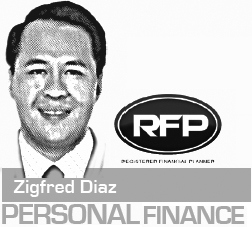The Three Most Important Words In Investing

If you were to capsulize investing into three words, what would those be? “Margin of safety”—legendary investor Warren Buffett once said, that these are the three most important words of investing.
The concept is simple, yet very powerful. Entire books have been written about it. In any investing seminar, whether directly or indirectly, would involve a discussion on margin of safety.
Warren Buffett was only echoing what his mentor Benjamin Graham said. In Chapter 20 of Graham’s seminal work, The Intelligent Investor he concludes the book with a chapter on margin of safety as a central concept in investing and wrote: “In the old legend, the wise men finally boiled down the history of mortal affairs into the single phrase: This too will pass. Confronted with a like challenge to distill the secret of sound investment into three words, we venture the motto: MARGIN OF SAFETY. This is the thread that runs through all the preceding discussion of investment policy—often explicitly, sometimes in a less direct fashion.”
So what does “margin of safety” mean? It simply means knowing how to minimize your risk by investing at a certain price that would decrease the probability that you would loose money if not eliminate the possibility of such no matter whatever factors might impact your investment.
But how do you actually apply the concept of margin of safety in your investing? Let us learn further from Benjamin Graham himself, who has this to say: “We greatly doubt whether the man who stakes money on his view that the market is heading up or down can ever be said to be protected by a margin of safety in any useful sense of the phrase…. Thus, in sum, we say that to have a true investment, there must be present a true margin of safety. And a true margin of safety is one that can be demonstrated by figures, by persuasive reasoning and by reference to a body of actual experience.”
According to Benjamin Graham, first of all, in order to have a true margin of safety, it must be “demonstrated by figures.” This means that you have to dig into the financial statements of the company to know what it is truly worth. To do this, you need to understand the basics of a financial statement. An investor does not need to go to accounting or finance school for this. One just needs to pick up a book that explains how to understand and read financial statements easily. Further, you only need to look at certain key figures and ratios in the financial statements for investment purposes. It may not be as simple as a walk in the park, but it is definitely not that hard once you know what you are looking for.
Second, Graham says that a true margin of safety must be “demonstrated by figures by persuasive reasoning…” In other words, when you look at the figures you must be persuaded that, indeed, you are getting into an investment with sufficient margin of safety using reasoning and logic. To do this, you need to think like how a good businessman thinks. After all, as Benjamin Graham said, investing is most intelligent when it is most business like. You need to find out what the investment is truly worth by using some kind of fundamental analysis-valuation tool, then you compare it with how much it is being sold to you. If it is below what it is worth then, by reason and logic, it must be a good investment. It would be illogical and unreasonable to buy something that is being sold many times over what it is truly worth. You wouldn’t buy a mobile phone worth P20,000, twice that price. Similarly, it makes not sense to buy or invest in something that is being sold for more than what it is truly worth.
Last, according to Graham, a true margin of safety must be “demonstrated by figures…by reference to an actual body of experience.” Graham may not have expounded much on this, but if you take the overall context of what he is saying, he means simply to relate the figures as reported and what the actual business is doing. In other words, do your own due diligence, “experience” the businesses’ products, service and management in order to make sure that what is being reported is somehow reasonably and logically connected to how the business is actually performing.
****
 Zigfred Diaz, RFP, is Registered Financial Planner based in Cebu. He is director at CERTA Inc., a personal-finance advisory firm. To learn more about personal-financial planning, attend the 66th RFP program this November 2017.
Zigfred Diaz, RFP, is Registered Financial Planner based in Cebu. He is director at CERTA Inc., a personal-finance advisory firm. To learn more about personal-financial planning, attend the 66th RFP program this November 2017.
To inquire, e-mail info@rfp.ph or text <name><e-mail> <RFP> at 0917-9689774.
Source: https://businessmirror.com.ph/the-three-most-important-words-in-investing/
2,755 total views, 1 views today












Social